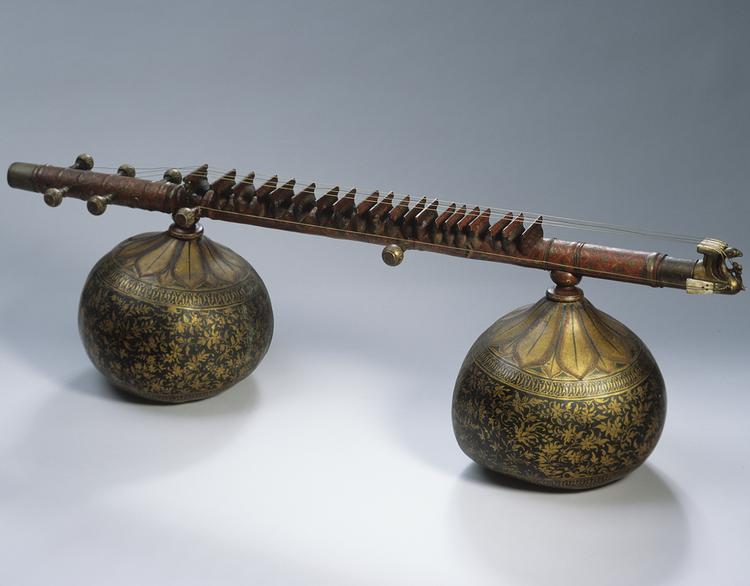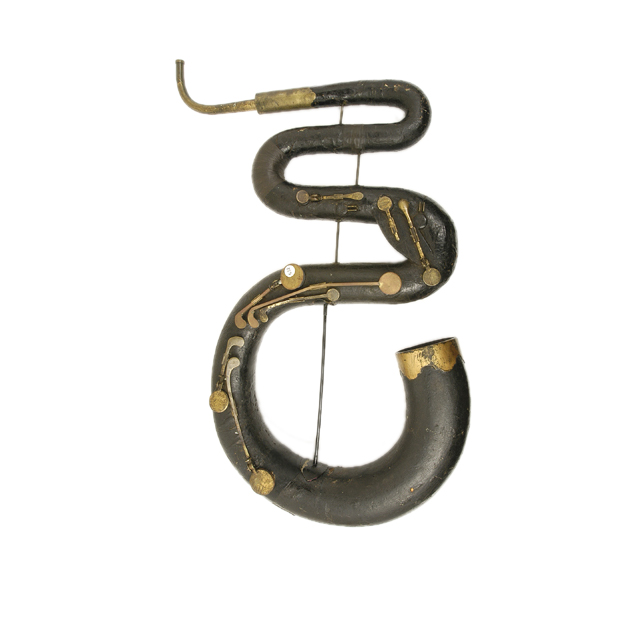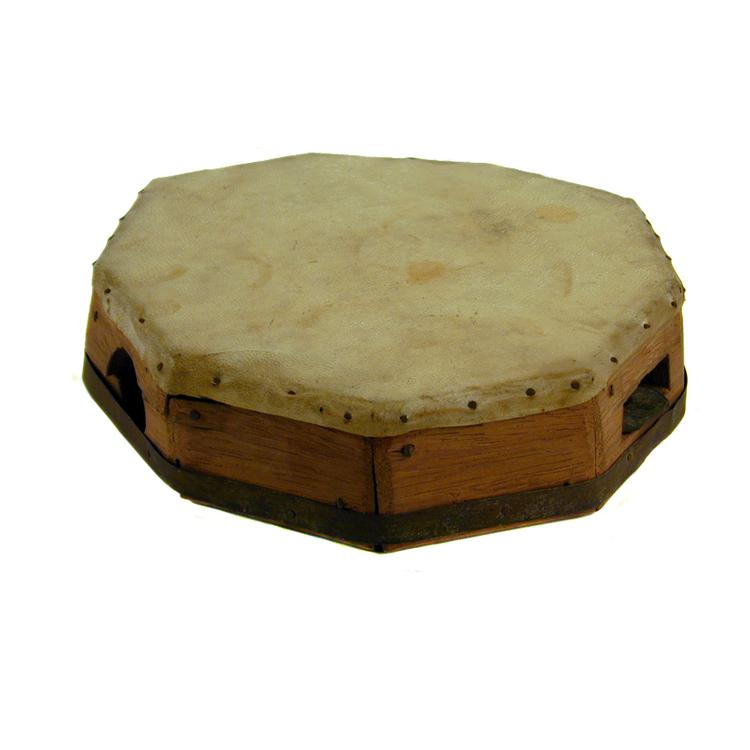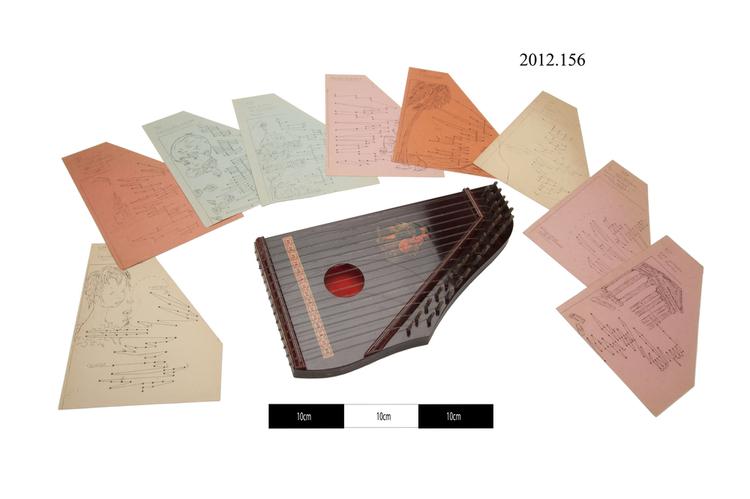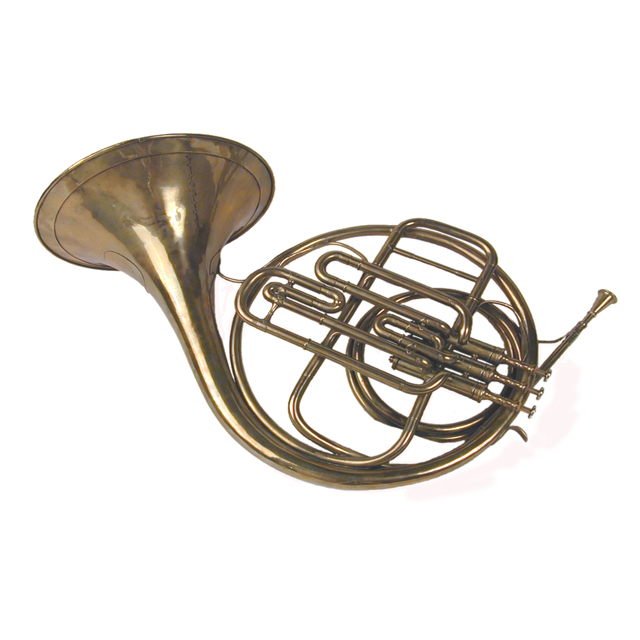
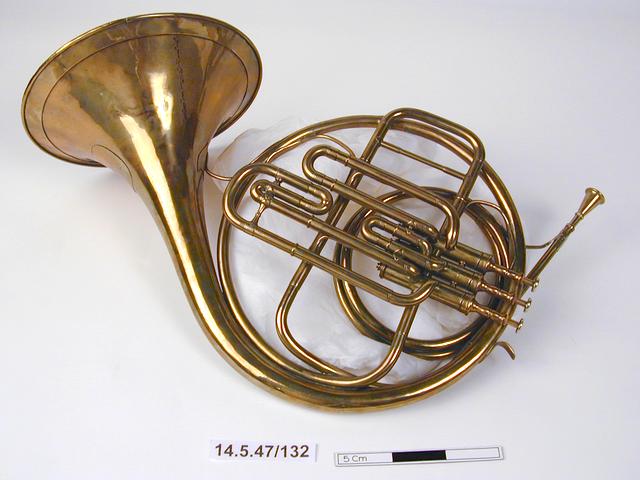
Horn, piston horn. Model A40, brass body, mounts and bell garland, German silver valve touches. 3 Périnet valves, brass crook for F, mouthpiece present. Piston stamped with Boosey & Co trumpet and banner device, serial number 71402. Name plate affixed to bell inscribed with Boosey monogram and Sotone name. Mouthpiece stamped F. Besson, Brevete. Evidence of extensive repair work. The attachment of a name plate to the bell is atypical of Boosey & Co and suggests that the bell may be a replacement onto which the inscription on the original bell has been affixed. The original bell garland would have been inscribed with the serial number 88669.
This narrow bore horn, patterned after horns made in France by Raoux, was the type of horn used by three generations of the Brain family. Its distinctive sound and technique, which reached its highest level with Dennis Brain, represented the most characteristic period of horn playing in Britain. Its tone is often described as being bright and transparent. The wide bore double horn, as used in British orchestras today, was developed in Germany. It began to gain favour with players in London in the 1930s because it improved accuracy and gave players greater security in the upper register. Production information for this instrument as recorded in the Boosey & Co. workshop order books: 'Date given out: 24th Jan. 1914 Date received: 29th Apr. 1914 No. of piston: 71402 No. of instrument: 88669 Description: F+Eb French Horn Model: A40 Charged to Regent Street: 9th May 1914 Given to Polish: 28th Apr. 1914 Workman's name: Bloomfield Remarks and Cost: Bloomfield 1 hr @ 10d. Bloomfield 86 hrs @ 10 1/2 d. Hills 954 Amount: (£)4/8/2'.



